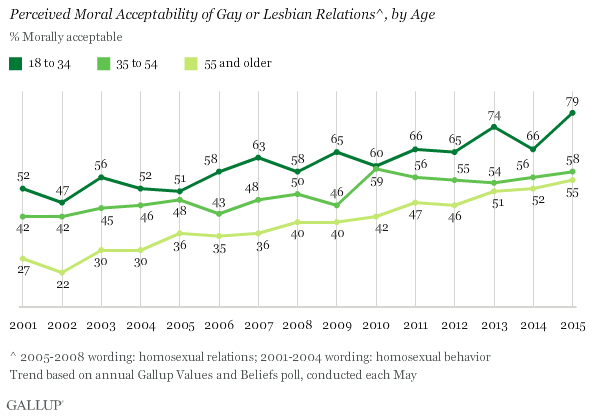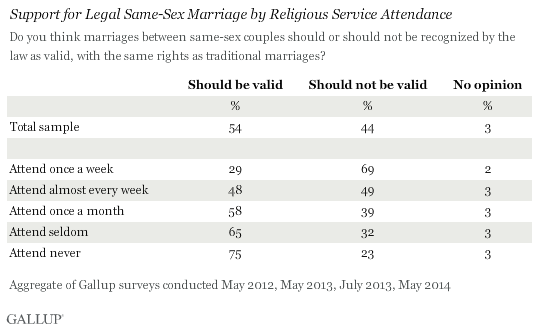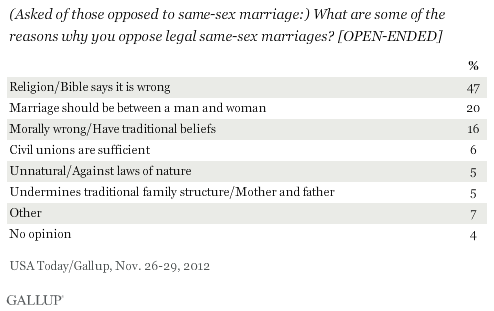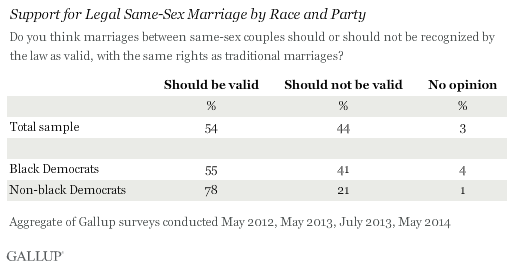Written by Stella Morabito
Abolishing all civil marriage is the primary goal of the elites who have been pushing same sex marriage. The scheme called “marriage equality” is not an end in itself, and never really has been. The LGBT agenda has spawned too many other disparate agendas hostile to the existence of marriage, making marriage “unsustainable,” if you will. By now we should be able to hear the growing drumbeat to abolish civil marriage, as well as to legalize polygamy and all manner of reproductive technologies.
Consider also the breakneck speed at which the push for same sex marriage has been happening recently. The agenda’s advocates have been very methodical in their organization, disciplined in their timing, flush with money, in control of all information outlets, including media, Hollywood, and academia. And perhaps most telling is the smearing of any dissenter in the public square, a stigma made de rigueur by Supreme Court Justice Anthony Kennedy in his animus-soaked opinion that repealed the Defense of Marriage Act.
We’ve seen also how the Obama Administration’s push for same sex marriage has occurred in lockstep with policies that are hostile to marriage, such as the severe marriage penalty written into Obamacare.
Activist judges have taken their cues from Attorney General Eric Holder who used the DOMA repeal to proclaim open season on any state that recognizes marriage as an organic (i.e., heterosexual) union of one man and one woman. In their crosshairs are state constitutions, businesses, students, communities, churches, and all of those bogus “conscience clauses” that were written into same sex marriage legislation in order to sway wavering state legislators to vote “aye.”
The tipping point came soon after certain big name conservatives and pundits swallowed the bait on same sex marriage. Folks like Michael Barone, John Bolton, George Will, S. E. Cupp, and David Blankenhorn have played a huge role in building momentum for this movement, which, as we will see, is blazing a trail to the abolition of state recognized marriage. And whether they know it or not, advocacy for same sex marriage is putting a lot of statist machinery into motion. Because once the state no longer has to recognize your marriage and family, the state no longer has to respect the existence of your marriage and family.
Without civil marriage, the family can no longer exist autonomously and serve as a wall of separation between the individual and the state. This has huge implications for the survival of freedom of association.
The notion of marriage equality was never about marriage or about equality. It’s all about the wrapping paper. It’s been packaged as an end in itself, but it is principally just a means to a deeper end. It is the means by which marriage extinction – the true target — can be achieved. If marriage and family are permitted to exist autonomously, power can be de-centralized in society. So the family has always been a thorn in the side of central planners and totalitarians. The connection between its abolition and the limitless growth of the state should be crystal clear. So anyone who has bought into this movement, or is tempted to do so, would want to step back and take a harder look.
Six Indicators We’re Headed Directly for Abolishing Civil Marriage
We can sort out six developments that indicate we’re on the fast track to abolishing civil marriage. They include: 1) The blueprint for abolishing family, developed by the founder of feminist legal theory, Martha Fineman; 2) support and advocacy of Fineman’s model by facilitators and regulators in the Obama Administration; 3) the statements of prominent LGBT activists themselves, including their 2006 manifesto which in effect established the abolition of marriage as the goal of the same sex marriage movement; 4) the demographic shift to single rather than married households; 5) the growing shift in social climate from marriage equality to marriage hostility; and 6) the recent push to export the LGBT agenda globally, particularly targeting poor and developing nations of Africa.
1) The Gender Theorist Model: Replace civil marriage with government-regulated contractual relationships
Collectivist style parenting may still seem like the stuff of science fiction to a lot of folks, but the ground for it has softened a lot since Hillary Clinton’s 1996 treatise It Takes a Village and American Federation of Teachers president Sandra Feldman’s 1998 op-ed “The Childswap Society.” We now have MSNBC anchor Melissa Harris-Perry declaring open war on traditional families by announcing “We have to break through our kind of private idea that kids belong to their parents or kids belong to their families and recognize that kids belong to whole communities.”
She envisages that the State will fill the vacuum left by the abolition of family
The abolition of marriage and family has been a longtime project of gender theorists. Among them is internationally renown feminist law theorist Martha Albertson Fineman whose 2004 book The Autonomy Myth argues strenuously for “the abolition of marriage as a legal category.” Her treatise is breathtaking in its brazen approach to ending family autonomy and privacy.
Fineman advocates for a system that would unavoidably result in the regulation of personal relationships through legal contracts. “Contract,” she writes “is an appealing metaphor with which to consider social and political arrangements. It imagines autonomous adults” hashing out the terms, etc. Yet she envisages that the State will fill the vacuum left by the abolition of family [emphasis added]:
“. . . in addition to contract rules, I anticipate that ameliorating doctrines would fill the void left by the abolition of this aspect of family law. In fact, it seems apparent to me that a lot more regulation (protection) would occur once interactions between individuals within families were removed from behind the veil of privacy that now shields them.”
Fineman operates on the apparent assumption that family privacy serves no purpose other than to afford institutional protection for men behaving badly. Her prescription is sweeping: “Once the institutional protection [is] removed, behavior would be judged by standards established to regulate interactions among all members of society.” [emphasis added]
There you have it. All of your social interactions judged by certain standards. Standards established by whom? The state. And lest our eyes glaze over at mention of it, we ought to think of the State for what it really is: a hierarchy of cliques, with one dominant clique at the top. (Think mean girls in charge of everything and everyone.)
Fineman replaces the word “spouse” with the term “sexual affiliate,” because, she professes, what we think of as “family” should be defined by its function, not its form. In other words, only “caretaker-dependent relationships” would be recognized in the sense that “family” is recognized today.
So the abolition of marriage, according to Fineman:
“would mean that sexual affiliates (formerly labeled husband and wife) would be regulated by the terms of their individualized agreements, with no special rules governing fairness and no unique review or monitoring of the negotiation process.”
Feel better? Fineman also states approvingly that:
“if the family is defined functionally, focused on the caretaker-dependent relationship, the traditionally problematic interactions of sexual affiliates (formerly designated “spouses”) are not protected by notions of family privacy.”
Indeed, no interaction could be protected by “notions of family privacy” in Fineman’s model. She elaborated further and more recently on all of this in an October 2013 article in the Chicago-Kent Law Review.
2) Friends in High Places promote Fineman’s Model of State-Regulated Contracts
Cass Sunstein, who served as President Obama’s regulatory czar from 2009 to 2012, has advocated strongly for the abolition of civil marriage and its replacement with contracts that would negotiate the terms of personal relationships.
In 2008 Sunstein published an article in the Cardozo Law Review arguing that there is no constitutional right to marry and suggesting that “states may abolish marriage without offending the Constitution.” And an entire chapter of a popular book Sunstein co-authored with Richard Thaler in 2008 is devoted to arguing for the abolition of civil marriage. This is from Nudge: Improving Decisions About Health, Wealth, and Happiness.
“Under our proposal, the word marriage would no longer appear in any laws, and marriage licenses would no longer be offered or recognized by any level of government. . . . Under our approach, the only legal status states would confer on couples would be a civil union, which would be a domestic partnership agreement between any two people.*(*Footnote: We duck the question of whether civil unions can involve more than two people.)”
Sunstein and Thaler dub their approach “libertarian paternalism,” an odd jargon which seems contrived to win over readers by evoking a strange juxtaposition of moderation and a heavy touch of the archaic.
Clearly, Sunstein has been laying the groundwork for the abolition of civil marriage. He purports that this would get the government out of a “licensing scheme,” but his specious phrasing is a fig leaf covering up the predictable effects of his approach: greater government regulation of personal relationships. His popular writing on the subject comes in the guise of “privatization” of relationships – even as gender theorists like Fineman argue against America’s “obsession” with privacy and individualism. But this is not a difficult circle to square. Thaler and Sunstein argue, pretty much in line with Fineman, that people ought to make use of contracts to define the terms of their relationships. And contracts invite – indeed, for Fineman, they demand – that the government function as an intimate partner in this legal ménage a trois.
3) LGBT Activists Say So Themselves: The Goal is to Abolish Marriage
“Gay marriage is a lie,” announced gay activist Masha Gessen in a panel discussion last year at the Sydney Writers’ Festival. “Fighting for gay marriage generally involves lying about what we’re going to do with marriage when we get there.” [Applause.] “It’s a no-brainer that the institution of marriage should not exist.”
Gessen was merely echoing a message from an LGBT manifesto of 2006 called Beyond Same Sex Marriage. The manifesto is a blatant rallying cry to bring about a post-marriage society, one in which there is no room for state-recognized marriage.
“It’s a no-brainer that the institution of marriage should not exist.”
Ethics and Public Policy Institute scholar Stanley Kurtz wrote extensively about this document in two National Review articles, entitled The Confession and The Confession II. Kurtz noted that the intent of the sponsors of the manifesto – which as of 2006 had hundreds of prominent signatories, including Cornel West, Barbara Ehrenreich, Martha Fineman, and Gloria Steinem – was “to dissolve marriage by extending the definition to every conceivable family type.”
Sunstein needn’t have “ducked the issue” of more than two parties in a domestic contract because legalizing polygamy is central to the manifesto. And there can be no doubt that the legalization of polygamy would result in the abolition of all state-recognized marriage. Polygamy — repackaged in the now trendy term “polyamory” – comes with an array of configurations too dizzying and with too many moving parts to be sustained as state-recognized marriage.
Despite the existence of the manifesto, the official line of the LGBT community still seems to be that gay marriage is only about equal rights for couples who love one another. Their spokespersons have been disciplined – with a friendly media running cover for them – in maintaining the official line so as not to provoke a debate about the real agenda to abolish marriage.
Supposedly conservative gay activists like Jonathan Rauch have also run cover and protected the timing of the agenda by claiming that the manifesto was merely a “fringe” of the LGBT movement. It’s irrelevant whether or not Rauch really believes his own propaganda that gay marriage will somehow strengthen a marriage culture by bringing loving gay couples into it. The main effect of the Rauch meme is to accelerate the abolition of civil marriage by hastening a legal framework for genderless marriage that will pave the way for total abolition of civil marriage, and with it private family life.
It’s clear the gloves are coming off and timing has entered a new phase. The push for polyamory has gone mainstream, right on schedule. Supportive puff pieces on it are popping up in places like Atlantic Monthly and the erstwhile women’s magazine Redbook. In the end, polyamory serves only as a transitory way station between the legalization of same sex marriage and the abolition of civil marriage.
4) Growing Dominance of Singles
Recent decades have seen a sharp upsurge of unmarried households. According to the U.S. Census Bureau, in 2012 there were 103 million unmarried people 18 and older. That’s 44 percent of all US residents over 18. And 62 percent of those 103 million had never been married. Unmarried individuals represented 56 million households in 2012. The rise in singles has had an undeniably huge impact on the electorate. In the 2012 election 39 percent of the voters were unmarried, compared to 24 percent of the voters in the 1972 election.
The “Communication League for Unmarried Equality,” is a coalition of singles’ rights organizations which argues that government benefits for marriage – including tax breaks and survivor benefits in social security — amount to marital status discrimination. Its advocates argue that civil marriage unjustly awards financial, social, and cultural benefits to married individuals at the expense of unmarried individuals who end up subsidizing marriage and children, without compensation. In addition, proponents of “unmarried equality” insist that the existence of these privileges serve to perpetuate prejudices and stereotypes about singles that inflict harm on them. (Sounds like a Supreme Court case brewing.)
Bella DePaulo spearheaded the movement as a blogger and author of Singled Out and Singlism: What it is, Why it Matters and How to Stop It.” According to DePaulo, the discrimination she calls “singlism” may seem more subtle than racism or sexism, but is just as damaging. She has tip-toed to the edge of advocating for the abolition of marriage, with a professor of feminist philosophy Elizabeth Blake, by saying that marriage should be “minimized” (for now) so that singles have the same benefits as married individuals. Which, naturally, means abolishing marriage.
“Singlism” itself is not yet considered a form of illegal discrimination. But DePaulo believes it should be:
“Because singlism is built right into American laws, it is not possible to be single and not be a target of discrimination. If you have followed the marriage equality debate, then you probably know that there are more than 1,000 federal laws that benefit or protect only those people who are legally married. Even if same-sex marriage becomes legal throughout the land, all those people who are single — whether gay or straight or any other status — will still remain second class citizens.”
5) Morphing of the Memes – from Marriage Equality to Marriage Ambivalence to Marriage Hostility
“Why would anyone get married?” That’s a quote from Nancy Pelosi in a Valentine’s Day interview last month, downplaying the importance of marriage. While some might say she’s simply courting the singles demographic, she’s mostly reinforcing and echoing a narrative that marriage is irrelevant or perhaps even harmful. She is contributing to the drumbeat to abolish civil marriage.
Let’s not forget Julia, the mascot of Obama’s reelection campaign who serves as a Stepford wife to the State.
Major cultural forces – the media, academia, and Hollywood – have already adopted an increasingly hostile view of marriage. We can see it in the use of the term “greedy marrieds” from a recent New York Times feature “The Changing American Family“: “Single people live alone and proudly consider themselves families of one — more generous and civic-minded than ‘greedy marrieds.’”
And look at NBC Sports in its coverage Olympic gold medalist skier David Wise. It described him as living an “alternative lifestyle” because he happened to be young and married with children. The clear inference was that he was abnormal.
The promotion and glorification of single parenting which got its start with the Murphy Brown TV series of the 1990s has gone into hyperdrive now. Check out online services such as Modamily, that matches people with “parenting partners,” with whom they can draw up a contract, arrange for artificial reproductive technologies, and forgo marriage.
And let’s not forget Julia, the mascot of Obama’s reelection campaign who serves, with more than a bit of irony, as a Stepford wife to the State. The narrative was clearly hostile to the idea of marriage and supportive of policies to abolish it.
6) LGBT Push for Same Sex Marriage in Developing Countries
The rush by LGBT activists and the Obama administration to lift bans on gay marriage in all 50 states is peculiarly fast and furious. Oddly so for a movement that seems to be gaining steam and social compliance. A reasonable question would be: What’s the rush if things are going so swimmingly your way? The only answer seems to be one of fragile timing.
The sudden LGBT push globally, especially in Africa, should give us pause as well. Why the abrupt shove into poor countries, threatening to cut off aid unless they comply with such a massive cultural shift and adopt the Western LGBT agenda? Why the laser focus on Uganda and Malawi instead of places like Iran where abuses of homosexuals are likely just as common?
We are witnessing a major strategy to export gay marriage – and all it entails for the abolition of marriage — worldwide. President Obama and Secretary of State Kerry have made an example of Uganda by threatening to cut off its aid over the existence of its anti-sodomy laws. Other developing nations are expected to take note and fall into line, creating a cascade effect until any other nation who resists will feel the noose tightening.
We might reasonably ask why this particular agenda is getting so much attention while the world goes to hell in a hand basket. Syria is overrun with vicious terrorist gangs at least as bad as its president. Russia is flexing its muscles, having just invaded the Ukraine and Crimea. Christians are being exterminated in record numbers throughout the Middle East. We’re looking at nuclear weapons in Iran. There’s a nuclear threat from North Korea, which not only starves its own people but is run by a guy who, it was said, feeds his political enemies to starving dogs. And yet President Obama and Secretary of State Kerry have been spending special quality time focusing on the LGBT agenda in in the poor countries of Africa?
Clearly the Western LGBT agenda represents a new brand of cultural imperialism that is not content to shape life at home, but intends to propagate itself – and all it entails – worldwide.
Ending Marriage Leads To A Centralized All Powerful State
The hard push for marriage equality was never about marriage. Neither was it about equality. It’s a convenient vehicle to abolish civil marriage, whether to rid the world of paternalism, evade responsibility for children, “privatize” relationships, or whatever. Abolishing marriage strips the family of its autonomy by placing it much more directly under the regulating control of the state.
Once the state no longer has to recognize the marriage relationship and its presumption of privilege and privacy, we all become atomized individuals in the eyes of the state, officially strangers to one another. We lose the space – the buffer zone – that the institution of the natural, organic family previously gave us and that forced the state to keep its distance.
Isn’t it ironic that feminists would replace the “paternalism” of marriage (what happened to strong women?) with the new paternalism of state regulation of personal relationships? Isn’t it ironic that singles in this scheme of things simply end up marrying the state?
At some point, we must conclude that freedom of association has its source in state acceptance of the core family as the primary buffer zone between the individual and the state. There is no escaping this fact, no matter a particular generation’s attitude or public opinion polling, or advances in medical technology, or whatever else comes our way.
Marriage Is The Template For Freedom Of Association
Without state recognition of – and respect for – marriage, can freedom of association survive? How so? On what basis?
Civil marriage provides the entire basis for presuming the rights and responsibilities of biological parents to raise their own children. It also assumes the right of spouses to refuse to testify against one another in court. It presumes survivorship – in guardianship of children as well as inheritance of property. If we abolish civil marriage, these will no longer be rights by default, but rights to be distributed at the pleasure of a bureaucratic state.
When a couple enters into a civil marriage, they are not inviting the government into their relationship, but rather putting the government on notice that they are a family unit. It’s the couple – not the state – that’s in the driver’s seat.Otherwise, they needn’t marry. Otherwise, central planners wouldn’t be so intent on abolishing marriage as a private and autonomous association from which the state must keep its distance, unless one partner wishes to exit by divorce.
Children – i.e., all of us born into a family – inherit that presumption of autonomy and broadcast it into society. We do so whether or not we ever get married ourselves. The presumption of family autonomy and privacy informs our right to freely associate with others – through romances, friendships, business contracts, and so on. It would be catastrophic to freedom if we threw it away.
State recognition of this autonomy cannot exist without state recognition of marriage. In fact, traditional marriage — just like traditional oxygen if you will – helps all of society breathe more freely.
If civil marriage is abolished, you can say hello to the government at your bedroom door because that comfortable little meme about “getting the state out of the marriage business” will have flown out your bedroom window while you were sleeping.



